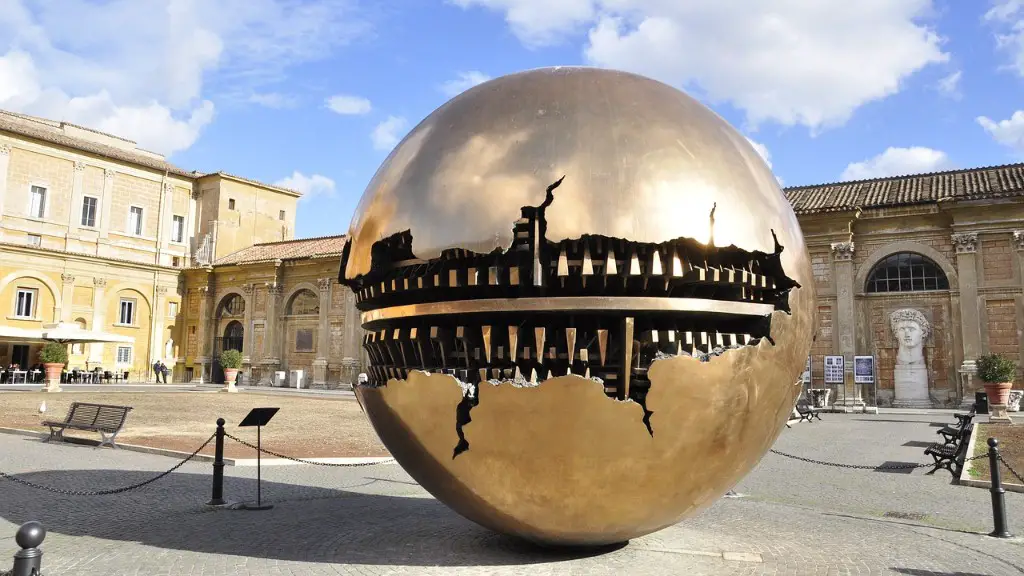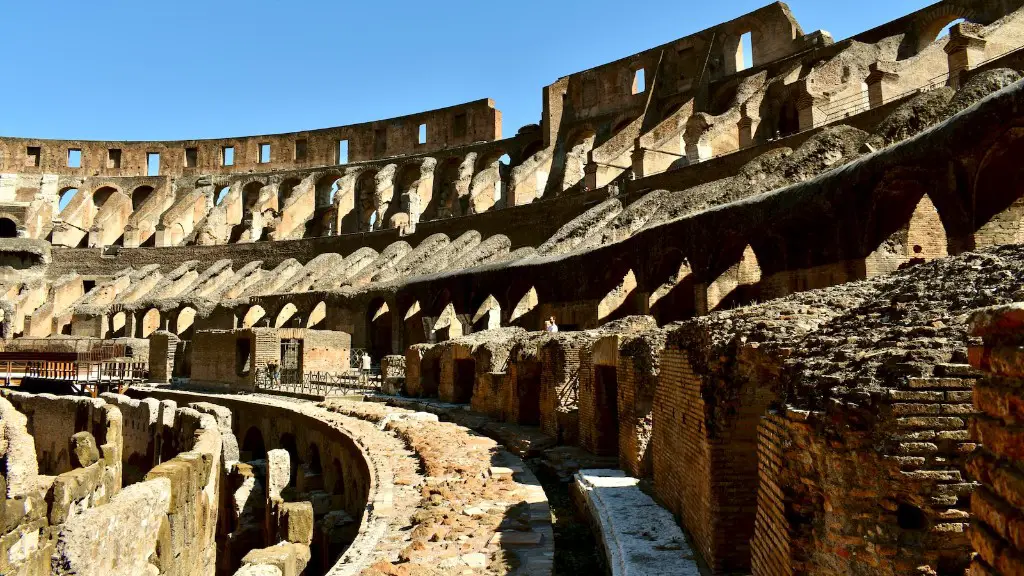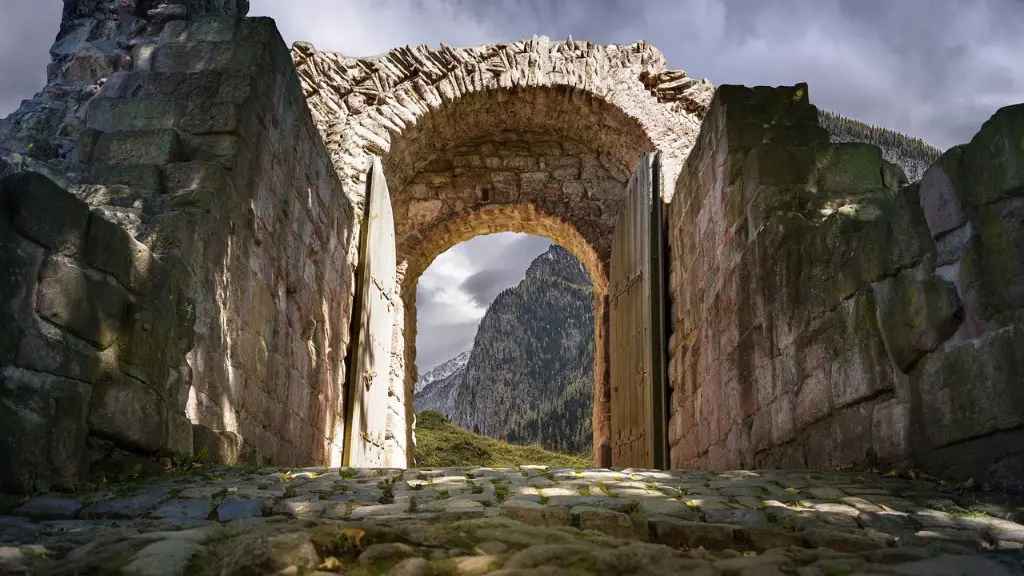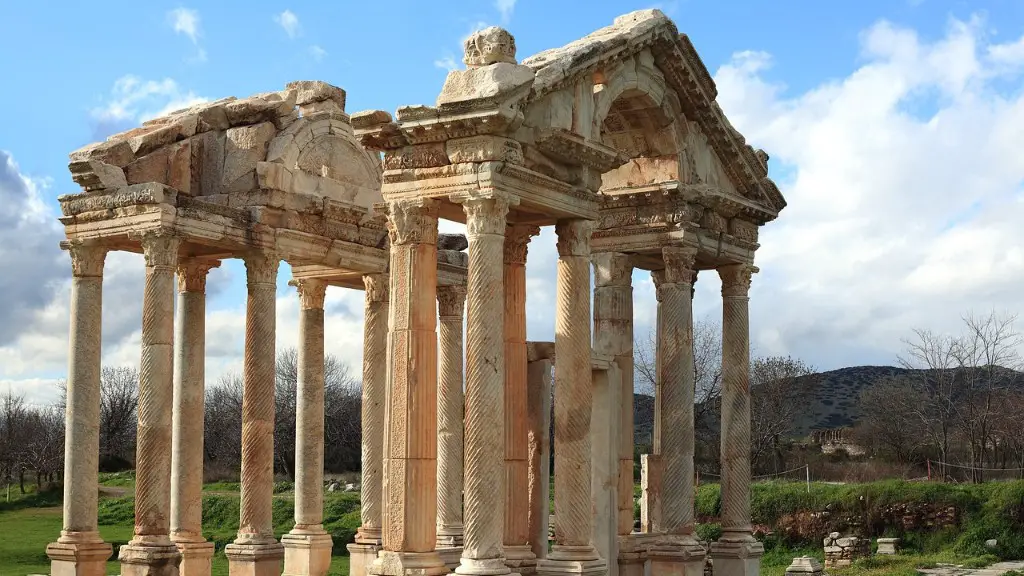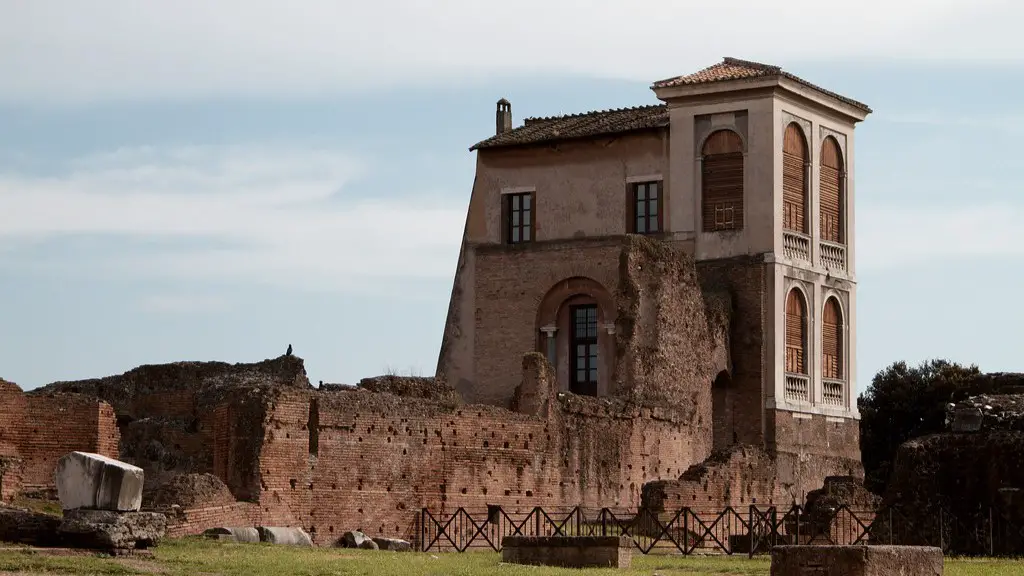In Ancient Rome, markets were integral to everyday life, bringing together farmers and merchants, who sold everything from food and spices to animals, fabrics and jewelry. Traditionally, markets in Rome would be held once a week and cities outside of the capital, like Pompeii and Ostia, would typically have a larger, more frequent market than those within the city boundaries. Ancient Rome’s markets were often grand affairs, sprawling across multiple streets and districts, serving as a meeting place for many different trades, businesses, and social classes.
In Rome, there were a few main markets, where most of the country’s trade took place. The Roman Forum was the most important market, as well as being the site of the Senate House and other significant government buildings. Here, traders would set up shop and sell a variety of goods, from food to clothing and jewelry. In addition, merchants would also bring in fish, fruit, game, and other foodstuffs from trade ships, which sailed directly into the harbour near the Forum. Other popular markets in Rome included the Forum Boarium, the cattle market, and the Forum Holitorium, the main vegetable market. The Ostia market, near Rome, was a major hub for long-distance trade, with merchants from all over the Empire coming here to sell and buy.
Ancient Roman markets were often noisy and chaotic, bustling with merchants and their customers. Prices were negotiated with bargains being made and money exchanged. Markets were important places for farmers, fishers and merchants to get their goods to consumers, as well as presenting an opportunity for the wealthy to buy whatever they wanted. Ancient Roman markets were also places of entertainment, with musicians, jugglers and acrobats performing, and street vendors selling treat foods and drink. Despite the wide array of goods and services, Ancient Roman markets served another purpose as well – as a centre of socialisation and a place of community gathering, where people could mingle and enjoy their time outside the home.
Expert sources all point to a thriving and complex market economy in Ancient Rome. During the time of the Republic and Empire, the Roman state was deeply involved in economic affairs and heavily regulated commerce. Roman senators and nobles funded major projects, like trading fleets and temples, and profited from commercial activities such as banking and money lending.
An instrument of payment in Ancient Rome was the rare and expensive aes grave. It was used to pay private contracts, as well as taxes. This exclusive means of payment served to strengthen the wealthy class, while the poorer classes were obliged to pay their taxes in coinage, which was much less valuable. Roman coins were mainly made of bronze and so not very valuable in comparison to gold and silver coins.
Ancient Roman markets were a sign of a highly advanced economy and remain famous as places with a great variety of goods and services, catering to everyone’s needs. It is clear that the markets of Ancient Rome were places of industry, commerce and pleasure, playing an integral role in Roman life.
Advances in Technology
In Ancient Rome, technology played a major role in driving economic progress and growth. Innovations such as the watermill and the potter’s wheel enabled merchants to produce far more goods than was possible before, leading to an increase in the number of goods for sale in the marketplaces. Technology was also used to improve the structure and efficiency of trade, with the most notable example being the construction of Roman roads. These roads connected the main cities of the Empire and facilitated the transportation and trading of resources, as well as providing quick access for people to reach the markets.
Innovation was also evident in the tools used by merchants and traders to aid with the exchange of goods, such as scales and coins. Roman coins and currency were among the most advanced in the world, with coins minted out of different precious metals and in a variety of denominations. Similarly, Roman scales were calibrated carefully and were used to weigh gold, silver, and other precious items.
In addition to new technologies, ancient Roman markets were informed by developments in banking and pricing. Banks, primarily run by wealthy elite, provided a secure place to store money and offered loans and other financial services. Businesses and government agencies also kept detailed records of prices and profits, enabling them to better plan for the future.
Overall, advances in technology, banking and pricing shaped the nature and structure of markets in Ancient Rome. From the construction of roads and innovation in coinage to the development of banks, these advances helped to facilitate a strong and prosperous economy.
Trade Regulations
The Roman government was conscious of the impact of markets on society and the economy and, as such, implemented a series of measures in order to regulate trade and maintain order. Historians suggest that laws in the Roman Republic and Empire were primarily enforced in the market places, with regulations pertaining to the sale of goods and prevention of fraud.
These laws protected the rights of sellers and buyers, and clearly outlined the responsibilities of both parties. Regulations pertained to the size, quality and price of goods, as well as the way in which they were sold and traded. Market inspectors also regularly visited the markets to ensure that everyone was abiding by the regulations and laws. Merchants found guilty of breaking the laws were usually heavily fined, while repeat offenders could expect harsher penalties.
The Roman regulations also focused on creating a fair and competitive marketplace. The Lex Aelia Sentia of 4 AD prohibited guilds of merchants from setting prices and preventing competition between traders. This law opened the market to multiple operators, encouraging entrepreneurial spirit and driving the growth and prosperity of the Roman economy.
While it may seem that the government imposed a great deal of regulation on the Roman markets, the ordinance not only enabled greater trade but also ensured the welfare of citizens by protecting them from fraudulent practices. Overall, it can be argued that the regulations provided the perfect balance between creating a fair marketplace and allowing merchants to flourish.
Economic Decline
Despite the thriving economy and advanced technology, the markets of Ancient Rome began to decline during the third century. Rome’s market economy was affected by a number of internal and external factors, such as a decrease in the number of traders, a decrease in available goods, political instability, and the rise of a dominant class of aristocrats. Constant warfare and a decrease in Spain’s mining industry also contributed to the decline in the market economy.
In addition to external factors, the Roman government’s regulations and policies had a negative impact on the markets. Taxes were increased drastically and laws made it harder for merchants to do business, leading to a gradual decline in the number of merchants. The introduction of currency devaluation, inflation, and the use of soldiers as unpaid labourers to run government enterprises further weakened the Roman market economy.
The rise of foreign and in-advancement of the countryside were other factors that contributed to the decline of Ancient Roman markets. With the growth of estates in the countryside and the decreasing number of people living in cities, demand for goods and services decreased, leading to the closure of many markets.
Although some merchants survived the economic decline and continued to trade in Roman markets, the markets of Ancient Rome are but a distant memory now. The introduction of new technologies, economic crises and financial regulations had a profound effect on the once-thriving marketplace.
Influence on Modern Markets
Despite their decline, the markets of Ancient Rome have had a lasting impact on modern commerce. The advances of Ancient Rome in pricing, banking and technology had a long-lasting influence on markets today and can be seen in the way modern-day economies are structured and regulated.
Modern-day economies, especially those with a strong government influence, owe much of their success to Ancient Rome. The introduction of trade laws and regulations, policies on taxation, and the concept of currency all stem from Roman commercial practices. Similarly, the technology behind banking and pricing, as well as infrastructure such as roads, were first formed in Ancient Rome and have since evolved to become the foundations of today’s market economy.
Today, modern markets continue to benefit from the influence of Ancient Rome. Many of the principles and regulations established by the Roman government serve to protect modern consumers, preventing fraud and ensuring fair pricing. Furthermore, the development of coins and currency in Ancient Rome has enabled modern-day economies to function and progress.
In conclusion, Ancient Rome was an advanced and prosperous economy and its markets, both grand affairs and small street games, played an important role in Roman society and economics. Even today, the influence of Ancient Rome on modern markets remains evident – from the technology used for pricing and banking, to the regulations which ensure fair and safe trading.
